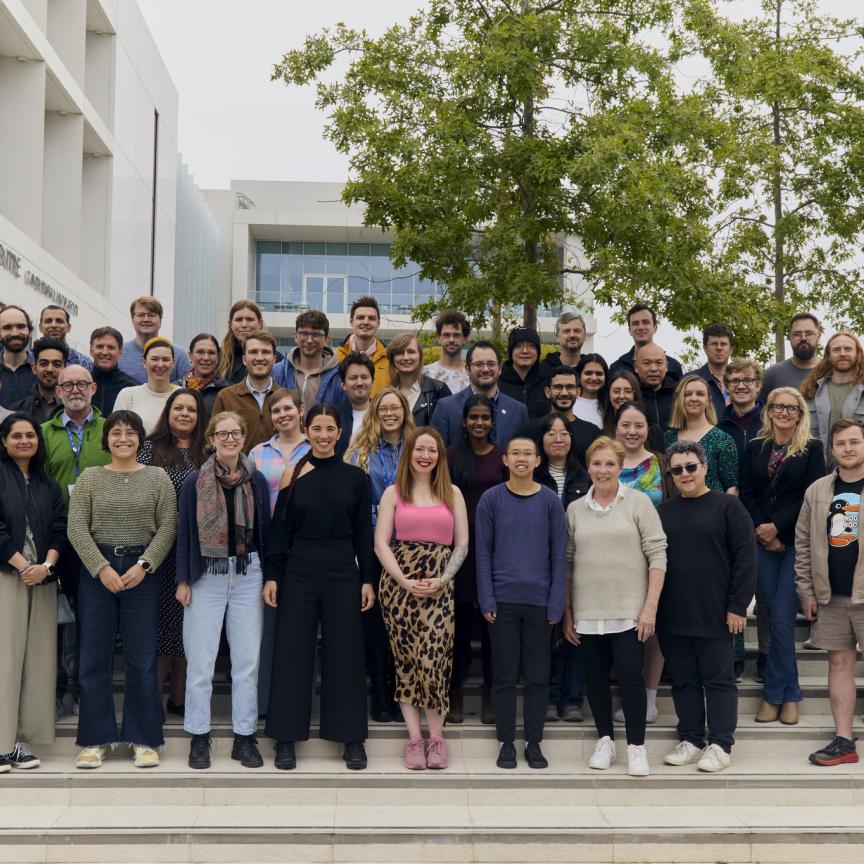British academic science has an ‘unfortunate history’ of being commercialised by companies in other countries too often, according to Bob Cockshott, of the Knowledge Transfer Network funded by Innovate UK. As ‘quantum lead’ at the government-backed innovation agency, he’s among many working in the country to ensure this is not the case for quantum technologies. That desire originated at the very highest level in December 2013, when UK chancellor George Osborne announced a £270 million investment in a National Quantum Technologies Programme.
Since the programme’s activities officially started at the beginning of 2015, it has drawn keen interest from across the world. Part of the reason is its scale. ‘When you add on other investments, including into the National Physical Laboratory (NPL), the UK is spending not far off half a billion Euros in five years,’ commented Cockshott. ‘Europe is aspiring to spend a billion in more than 10 years, so you could argue that the UK is spending at the same rate as all the European countries together.’
Yet perhaps still more important is how that money is being spent, with the programme integrating universities and companies in a pioneering way. In 2015 it published a strategy for making the most efficient use of the money, Cockshott said, and a roadmap to chart the applications where quantum research will lead to product. Four Quantum Technology Hubs, centred in Birmingham, Glasgow, Oxford and York form focal points involving 17 UK universities and 132 companies, pulling together industry and government funding. ‘We want to bridge the gap between what users think they need, what they find they need when they know what quantum technology might be able to do, and what the scientists are producing, so that they know what products to develop,’ Cockshott explained.
Clearly, any product containing a laser is a quantum technology. However the important upcoming applications are what Mark Thompson, acting director of the Centre for Quantum Photonics at the University of Bristol, calls ‘quantum 2.0’. ‘We’re looking at quantum technologies that allow you to solve problems either in completely different ways or that you couldn’t have solved before,’ Thompson said. Typically, those technologies use some of the smallest particles as their basic components. They exploit properties such as the polarisation state of individual photons, the spin of an electron, or the excitation states of ions or atoms.
‘We talk about the superposition state of the photon – you can have a photon that exists in multiple places at the same time, a purely quantum mechanical property,’ Thompson explained. ‘Or you can entangle two photons so that there are correlations with each other that are nonsensical from a classical perspective, where you can measure the properties on one photon, and then infer exactly the properties of the other photon.’
Thompson and his colleagues are using silicon photonic devices, chips with waveguides in which they can create and manipulate entangled photon states. That’s allowed them to produce what Thompson calls ‘the world’s first chip-to-chip quantum secure communication system’. ‘We’ve used commercial fabrication facilities, and created transmitter and receiver chips,’ he remarked. ‘The idea is that ultimately we’ll be able to deploy them inside standard telecommunication systems, bringing improved security across our communication infrastructure. There are hopes that this will go down eventually to mobile applications in mobile phones and laptops or computing devices.’
Bristol researchers are also seeking to capitalise on the revolutionary potential of quantum computers enabled by entanglement. ‘We’re producing proof-of-principle quantum information processing protocols, like small-scale factoring algorithms and quantum chemistry calculations,’ Thompson explained. ‘In the longer term we’ll be able to scale up this technology to outperform classical computing technology.’
Generating and detecting individual photons in such applications is ‘an incredibly challenging thing to do’, Thompson emphasised. Yet it’s becoming increasingly possible, for example with Bristol researchers devising quantum-dot based systems for creating single photons. The pace with which such technology is evolving is partly behind the commercialisation push, said Thompson. ‘It’s moving towards engineering challenges, of yield, scaling up and reproducibility, improving the performance of sources, reducing the loss of the photonic components and making detectors more efficient.’ Typically the equipment and facilities required to develop, test and characterise these technologies in order to drive them forward can be very expensive, he highlighted. Coordination within the Quantum Technologies Programmes can therefore help provide access at reasonable cost.
The best time is near
Even quantum technologies that manipulate properties of atoms rely heavily on optical components, commented Graeme Malcolm, chief executive officer and co-founder of M Squared Lasers, in Glasgow, Scotland. His company produces magneto-optical traps for cooling atoms and atom interferometers that can comprise key building blocks of quantum instruments. Collisions with photons emitted by M Squared’s continuous-wave narrow-linewidth titanium-sapphire laser ‘SolsTiS’ slow, and therefore also cool, the atoms down. From jet aircraft speeds, around 300 metres per second, they’re reduced to a snail’s pace, less than a metre per second, equating to a few millionths of a degree Kelvin. A magnetic field can then arrange atoms in an eggbox-pattern lattice, organised by differences in their excitation states. Interactions between the atoms enable control and detection of their motion and electronic states on the quantum level using other laser beams.
‘We’re most heavily involved in super-accurate clocks,’ Malcolm said. M Squared’s lasers are used by the world’s most accurate clocks at the US National Institute for Standards and Technology (NIST) giving an accuracy of one part in 1018. ‘That’s equivalent to a second in almost the entire lifetime of the universe,’ Malcolm observed. Commercialising quantum clocks could help the financial industry, providing more accurate timestamps on trades. That should avoid confusion that arose from inaccurate time stamps in attempts to understand the financial market collapse of 2008, Malcolm noted.
In the Quantum Technologies Programme’s first year, M Squared has made portable magneto-optical traps together with the Birmingham hub. Their suitcase-sized prototype has since been driven around Europe in the back of a car and demonstrated. ‘One of the preconceptions is that the instrument needs cryogenics and it’s therefore never going to be small and portable,’ Malcolm said. ‘We showed that only the atoms have to be cold. You can have a very big temperature gradient between the atoms and the outside of the instrument. This demonstrator doesn’t have any cryogenics. It is just a solid-state laser system and a miniaturised magneto-optical trap.’
This is just the start of the miniaturisation efforts, Malcolm added. ‘There are three modules: the cold atoms or ions, in a cell or chip; the lasers used in cooling; and the control system that turns them into a practical instrument. The cells are currently 10x10cm. The next challenges are to create smaller components, atom or ion chips, or the associated photonics bed.’
Quantum clocks could also benefit navigation systems, accurately measuring time down to femtoseconds-per-day level of accuracy. This might enable autonomous navigation without GPS, when combined with accurate distance measurements from quantum inertial sensors that are far better than the gyroscopes in mobile phones. Quantum inertial sensors based on cold atoms would have a far lower drift rate than existing silicon-based sensors, Cockshott emphasised. Cold atom trap sensors could also provide exquisitely sensitive gravity detection, he suggests.
The most immediate major market for quantum gravimeters is geological prospecting for minerals and oil – even though the oil industry is currently struggling. Gravimeters are already produced, Cockshott highlighted, but the few high performance devices in existence are extremely expensive. They are also difficult to use, and can be subject to US ITAR arms regulations, which are ‘very inconvenient’. Were they more readily available at lower cost, more precise gravimeters might help reduce expenditure on repairing and improving infrastructure for buried utilities like gas, water and telecommunications. ‘Holes are dug in the wrong place because we don’t know what’s down there,’ Cockshott said. ‘If there were a way of more accurately charting to a depth of maybe five metres, then we might save an awful lot of money.’
Assessing applications, creating careers
Understanding whether there’s truly a desire for applications like this is one of the programme’s most important challenges.‘We need to work with the markets to understand what they really want,’ Cockshott stressed. ‘It’s making sure that products are developed in the right place on the spectrum from small and low performance to very high performance to produce the best returns. In some cases they’re not looking for ultimate performance, they’re looking for lower cost, smaller devices that use less power and have a longer lifetime.’
In many instances, the government itself is likely to be one of the first customers. For example, gravimeters might have military applications looking for caves, or tunnels. ‘They’re likely to be the early adopters, because they can afford expensive products in small quantities and they don’t mind particularly if it’s still bulky,’ Cockshott said. ‘Somebody told me that they had to saw the corners off of the first pieces of satellite navigation equipment to get it through the conning tower of a submarine. Now, we’ve all got GPS in our phones – a tiny little chip that was made for 50 cents.’
Consequently the most advanced quantum technologies are those seeking to serve very large existing industrial or governmental needs, Malcolm said. That’s why M Squared is involved in time standards programmes like those at NIST, as well as at the NPL and elsewhere in the world. ‘Now we’re starting to see the semiconductor metrology industry using cold ions to create a scalpel that’s a single ion thick,’ Malcolm added. ‘As people want to go from 300 million to 1.2 billion transistors per chip, the device has to shrink so much that it’s almost processing material at the atomic level.’ The atom-thick scalpels can create the necessary precision in the lithography masks used in manufacturing such devices.
M Squared supplies photonics systems throughout Europe and the US as well as the UK. ‘The quantum technology market is gaining pace and some areas in the world are investing incredibly heavily in this,’ Malcolm said. Yet, Malcolm believes that the way the UK has joined up the quantum community has given it ‘a real position of leadership’. M Squared’s involvement sees some of its employees seconded to the Quantum Technology Hubs, NPL and other government labs, and researchers from those institutions seconded to its Glasgow facility.
Training and exchanging knowledge plays an important role in supporting the Quantum Technologies Programme’s aspiration, Thompson stressed. Bristol runs one of three centres for doctoral training in quantum engineering in the UK, training approximately 10 PhD students per year. And in March 2016, it secured a further £9 million to create a Quantum Technology Enterprise Centre and Quantum Photonic Manufacturing Centre.
‘We’re going to be taking early stage postdoctoral researchers and putting them through an extensive one year training period in business, enterprise and entrepreneurship,’ Thompson explained. ‘We’re looking at training quantum technology fellows per year for the next four years, in the hope that these quantum fellows guys will go out and start to create a quantum technology industry here in the UK. In the next five years, we really want to see these [quantum] technologies coming out of the university research labs, being adopted by business and enabling new companies. For that, we need the right people.’
Malcolm is impressed with the contribution universities are making in this regard. ‘They’re taking on that challenge in a way that I’ve not seen academia do in the past,’ he remarked. ‘They’re really passionate about having an impact in the real world.’ In fact, the determination to pioneer the commercialisation of quantum technologies is tangible nationwide. ‘It’s been treated as a once-in-a-lifetime opportunity for academia and industry to build long-term future value,’ Malcolm added.


